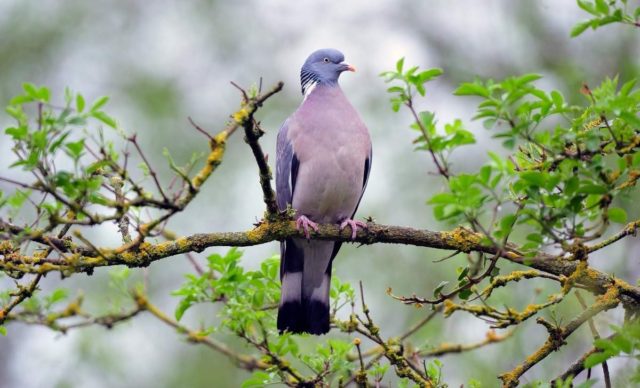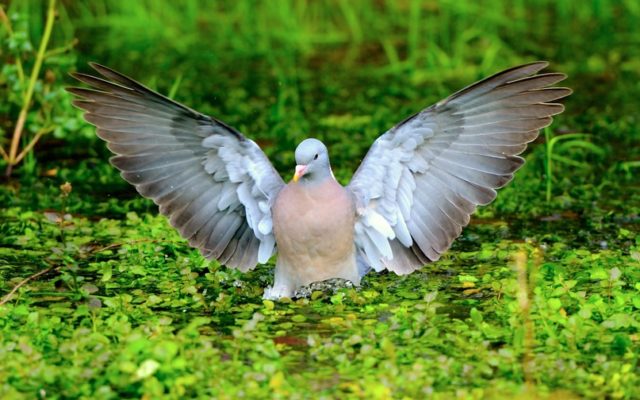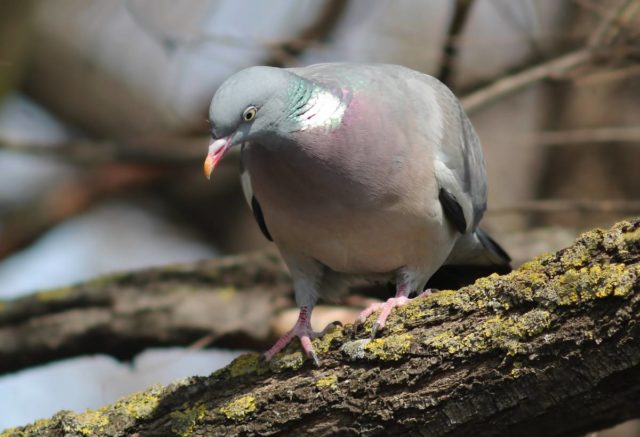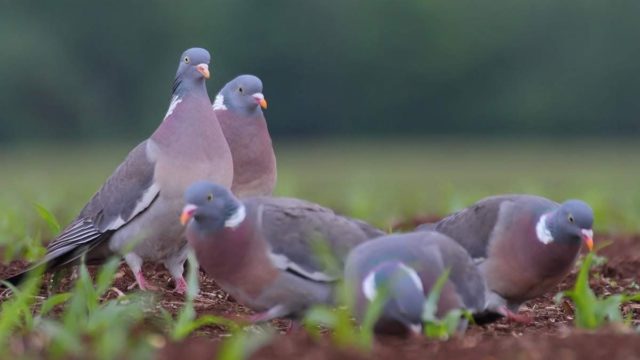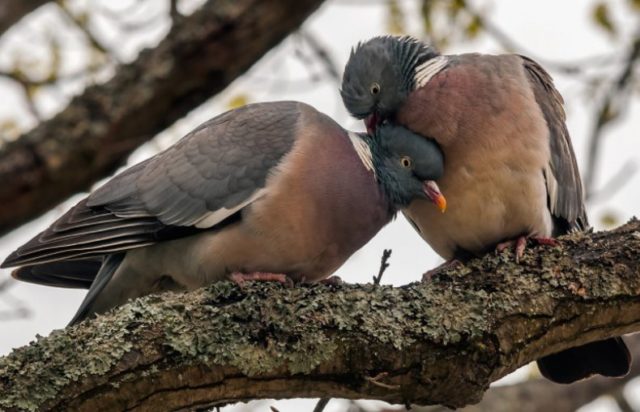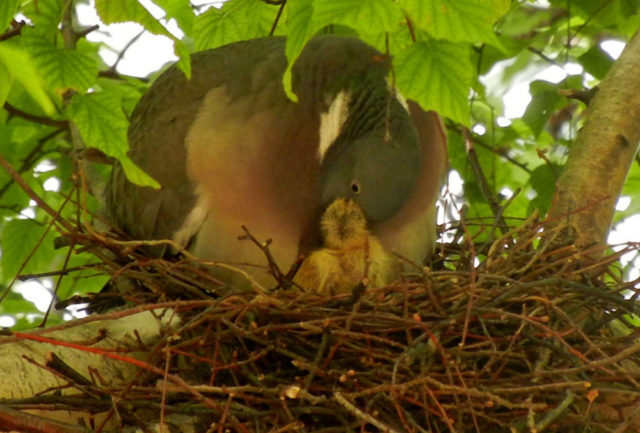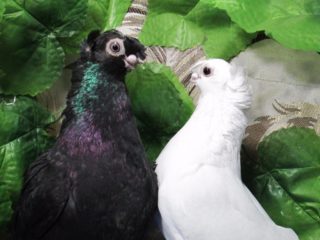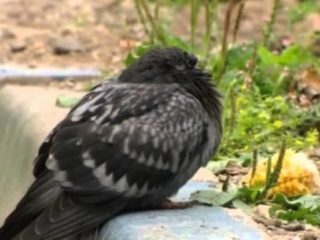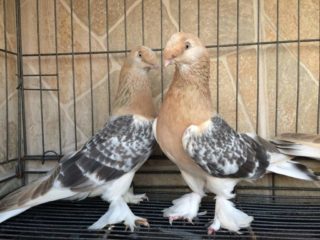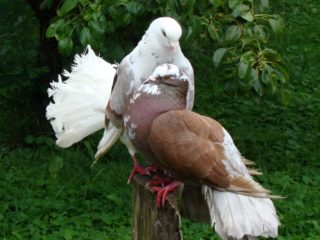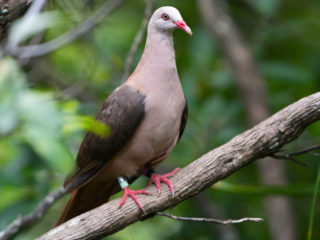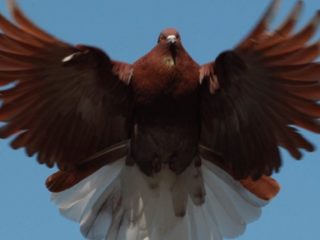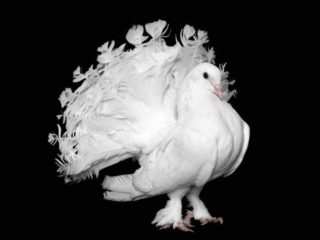Content
The wood pigeon leads a hidden life in the forests of temperate latitudes of Russia. The small bird is listed in the Red Book and is protected by law in some states.
The wood pigeon is a wood pigeon that is rarely seen in nature due to its lifestyle, which takes place in the crowns of trees. They differ in size and color from the city ones, which are known to everyone. The wood pigeon makes itself known by occasionally appearing from dense branches, emitting characteristic sounds from the thicket of trees.
Description of the wood pigeon
The wild pigeon (pictured) or wood pigeon has the Latin name Columba palumbus. People mistake it for an ordinary pigeon from an urban environment, but the wood pigeon is distinguished by its large physical characteristics, color, and residence in isolated habitats. The pigeon lives in sparsely populated places, hiding in the foliage of trees, guarding its “hermitage”. Hunters, wild animals (foxes, ferrets, martens, badgers) and feathered predators (peregrine falcon, hawk, golden eagle) are the main enemies.
The wood pigeon is larger and more powerful than ordinary pigeons. The length can be more than 40 cm, the weight varies from 500 g to 930 g. The color of the feathers is gray, with a tint of blue. The breast is gray-reddish. The crop is colored turquoise or lilac.On the neck, greenish in color with a tint, it has 2 white spots. When flying, white stripes—chevrons—are clearly visible on the wings.
With old age, the white spots on the neck become brighter, the beak turns intensely yellow. The color of the breast becomes more pink, the white stripes on the tail stand out noticeably. The bird's beak is yellow or pinkish, its eyes are yellow, and its legs are red.
The wingspan reaches 75 cm. When taking off, they make a characteristic flapping sound.
The distinctive gurgling calls can be heard in the early morning when near a forested area: “kru-kuu-ku-kuku, kru-kuu-ku-kuku.” These strong sounds are made by the wood pigeon. During breeding, the pigeon hides in the treetops and does not make its presence known by sounds or whistles. The wood pigeon immediately becomes silent when it notices the approach or presence of people or animals. Feeding occurs nearby, as the wood pigeon is afraid to leave the nest for a long time, leaving the clutch or chicks behind. The cautious pigeon chooses short distances, flying from tree to tree, flying around the landing site from afar. Hard-to-reach, remote corners of the forest are ideal secluded places for the secretive wood pigeon.
Habitat and distribution
The wood pigeon in the photo is found in temperate latitudes north of the equator:
- North West Africa;
- Europe;
- Western Siberia;
- Iran, Iraq, Türkiye;
- Himalayas.
The bird's seasonal migration is partly influenced by its habitat. The wood pigeon from Africa does not fly anywhere, settling in one place. The northern wood pigeon migrates to the southern regions. The forests of the Scandinavian Peninsula, mixed forests of the Baltic states, and Ukraine are the wood pigeon’s favorite breeding and residence areas.The pigeon chose the northwestern part of Russia as its habitat, flying for the winter to the southern edges of the Caucasus, Kuban, and Crimea.
The northern pigeon lives in coniferous forests. Closer to the south it settles in mixed forests. Loves oak groves, with sufficient food. The pigeon can live in forest-steppe zones.
The distribution range of the migratory bird Vitiutna is from Western Europe to the border with Asia, coastal zones of the Atlantic coast of Africa from the north-west side.
The wood pigeon finds food in the fields, feeding on seeds and occasionally selecting worms and insects. The wood pigeon is specially hunted by sports shooting enthusiasts, training their reaction speed. The decline in the pigeon population is due to deforestation and hunting.
Varieties
The wood pigeon is divided into several varieties in different climatic and geographical zones of the earth:
Pigeons | Short description |
Rock pigeon
| The color of the plumage is gray, the tail is dark. Settles in mountainous areas, forests, and urban areas. It is rarely removed from its home and can migrate. A small bird with a wingspan of no more than 22 cm. It feeds on grains and food that is located near the nesting site. |
Gray dove
| The first description was made in Indonesia, where the pigeon chose mangroves and ordinary forests to live. The body feather is silver-gray. The wing is decorated with black edging. The back of the neck is green, the eyes are red, and can also be purple. |
rock pigeon
| Looks like a sisar. But the light tail and black beak distinguish it from the sisar. Lives in the mountainous regions of Tibet, Korea, Altai. Nests on rocks and high places. |
Turtle Dove
| Migratory pigeon.He fell in love with the forest-steppes of Ukraine, Moldova, southern European regions, Asian countries, Africa and Australia. Has many subspecies. Small parameters - 27 cm. The feather is gray, with a brownish tint. The neck is decorated with a black stripe. Pointed wings with white stripes. Wedge tail. Paws are red. |
Klintukh
| The pigeon lives in the regions of Siberia, China, Kazakhstan and Turkey. It nests in trees, choosing hollows. The plumage has a bluish tint. The neck and breast are green, the wings have a grayish-blue tint, matte, with a black stripe across them. The tail section is highlighted with black stripes. |
Depending on the habitat of wood pigeons, several species are distinguished:
- Asian pigeon;
- North African pigeon;
- Iranian wood pigeon;
- Azorean.
Pigeon in the Azores of Portugal, protected by the Red Book. The Wood Pigeon, which inhabited the islands of the Azores archipelago, has survived and now lives on the islands of Sao Miguel and Pico. Here, pigeons are also hunted, since the number of birds still allows shooting. Other habitats of this subspecies of wood pigeon are under state protection and protection. The wood pigeon, from the island of Madeira, was exterminated at the beginning of the last century.
Behavior and lifestyle of the wood pigeon
Pigeons live in flocks of several dozen birds. During migration, flocks of hundreds of animals gather together.
They spend almost all their time in the fields to obtain food: cereal grains, legumes and various grain plants. The agile, nimble large wood pigeon, the wood pigeon, shows extreme caution during nesting and migration, and chooses distant, calm and quiet places. The wood pigeon communicates with other relatives using sounds called cooing, like all pigeons. When taking off, it makes a loud sound with its wings, the flight is energetic and noisy.
Since it picks up food from the ground, it has to walk - it moves in small steps, nodding its head, which helps to focus its eyes on the food. Due to its large size, it takes off slowly and heavily. Can become prey for small predators.
Feeding of the wild pigeon
Wood pigeons feed on what is available near the nest. If this is a pine forest or oak grove, then the food will mainly consist of cones, acorns and seeds of other plants. They collect food from branches or from the ground.
Places with rich food, fields with grains, become a favorite place of food, where flocks flock from all over the area. The pigeon eats legumes, fruits, nuts, herbs, wild and cultivated grains. Berries also serve as food: lingonberries, blueberries, blueberries.
A wood pigeon's crop can hold a lot of food: up to 7 acorns or a handful of grain. The pigeon can pluck small bushes with berries and nuts clean. Wheat is a favorite treat for the wood pigeon. They raid fields during the harvest, picking up fallen ears of corn or swooping down on heaps of grain. And after the harvest, the wood pigeon chooses wheat fields to gather many birds.
Reproduction and nesting method
The flocking pigeon, during the period of incubation and nursing of chicks, retires with the dove in a nest made of thin twigs. At the same time, food is obtained nearby. The male dove brings food while courting the dove. The female incubates the eggs.
The breeding season lasts from April to September. A flock of pigeons, consisting of married couples and young individuals who have reached the maturity to find a mate during the winter, arrive at the summer location.In the morning hours, the wild pigeon, with its characteristic cooing, begins to lure the female from the tops of the trees, this can be seen and heard in the video:
By the end of April, or at the beginning of May, the young animals choose a pair and begin to build a nest, twisting twigs. At the same time, the African resident pigeon also begins to build nests, having decided on pairs.
Wood pigeons' nests are built "openwork", visible between the twigs from all sides, with a flat bottom. The pigeon twists thicker branches with small flexible twigs. The bird house is attached between the branches at a low height, no more than 2 m. Sometimes young couples use old nests of other birds, strengthening it with twigs and twigs. The rapid completion of the construction of the “house” is marked by the beginning of mating games.
During mating games, the male pigeon flies in circles, coos with the female, performing ritual games and flights. After the games, the female lays eggs. It takes 15-18 days to incubate. At this time, the wood pigeon does not fly far. The young dove helps the blueberry in everything, being nearby all the time, in the foliage. The couple behaves very carefully so as not to reveal their presence to predators - small animals and birds.
After the wood pigeon chicks hatch, the parents feed them for 1 month, taking turns carrying food. The curd secretion from the pigeon's crop is used to feed the chicks at first. Then the moment comes when the chicks switch to other food. Usually, vityutnayas have 1-2 chicks, which after 40 days learn to fly next to their parents. After mastering the skill, the chicks fly away from their native nest, starting an independent life in the flock.
Lifespan and numbers
The pigeon leads a secretive lifestyle, carefully guarding its space when breeding offspring away from people and noisy cities.
With the beginning of the use of fertilizers and chemicals in fields with grains and other crops, in the 50s of the last century, the number of pigeons fell several times. The pigeon, which feeds on grains, cereals and legumes, is poisoned by fertilizers. Having chosen a rich place for feeding, wood pigeons flock there in flocks and return again and again, receiving lethal doses of poisons.
The lifespan of a wood pigeon is approximately 16 years. The number of birds decreases every year. In Russia, pigeon pigeons are caught by hunting for entertainment purposes - training hunting skills. Meat is used for cooking. The pigeon, being pursued by humans, changes its habitat, moving into the remote corners of the forests. In European countries, the wood pigeon can calmly settle even in cities, arranging nests in noisy places, near roads, on the roofs of multi-story buildings. Hunting, although allowed, is not very popular. The wood pigeon often comes under fire in the field where it feeds. Getting prey from someone else's land is a big problem. You cannot walk across the field without the owner’s knowledge; this is prohibited by law. The habitat of the wood pigeon is decreasing - forests favored by the birds are being cut down and roads are being built. The noise, the presence of risk and anxiety drives Vityutney to other distant lands. Tourist wildlife areas have also been cleared of the presence of pigeons. Despite the fact that nature lovers do not bother, shoot, or catch pigeons.
Natural factors in reducing the number of pigeons are weather conditions and climate change. Late spring and rainy summer play a role in reducing the number of clutches that a pigeon manages to make during the summer months. Such natural conditions are not uncommon in the northern, northwestern habitats on the Eurasian continent.
The second factor is natural enemies in nature that prey on the birds and their offspring. Peregrine falcon and goshawk attack young animals. Small birds, crows, jays and magpies destroy nests, hunting for eggs. Scientists ornithologists suggest that the wood pigeon loses 40% of its eggs precisely because of birds. Squirrels and martens also love to feast on wood pigeon eggs.
Conclusion
The wood pigeon, a handsome forest pigeon, chooses a mate for life. Their cooing in the morning and the fluttering of their wings rejoices at the imminent arrival of warm spring days. If they settled next to people, then there is hope that the birds will not disappear forever.
